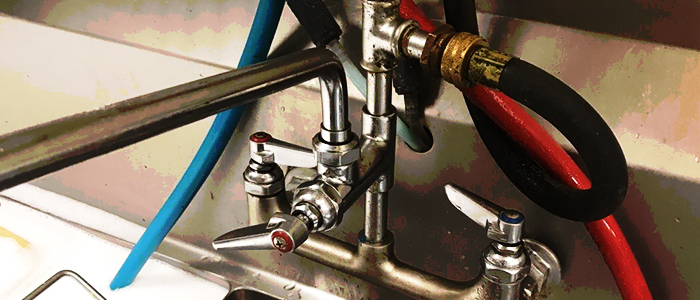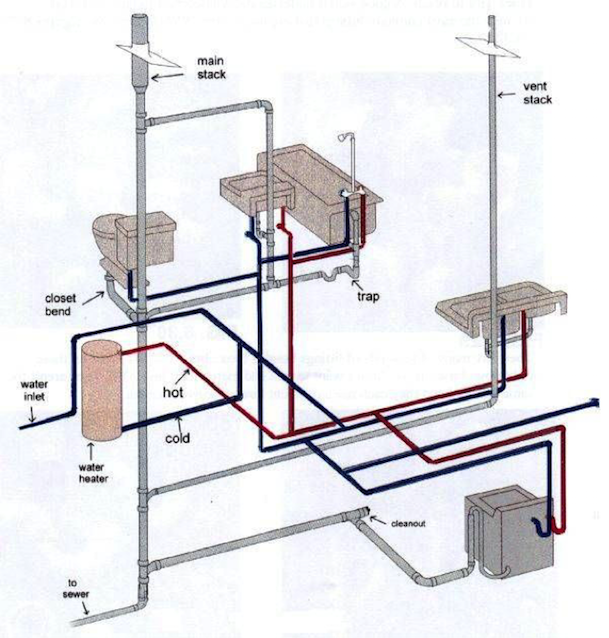What're your thoughts and feelings on Exploring Your Homes Plumbing Anatomy?

Recognizing just how your home's plumbing system works is crucial for every house owner. From providing tidy water for drinking, cooking, and showering to securely removing wastewater, a well-maintained pipes system is critical for your family's health and comfort. In this extensive guide, we'll check out the detailed network that makes up your home's plumbing and offer ideas on upkeep, upgrades, and handling common problems.
Intro
Your home's pipes system is greater than just a network of pipes; it's a complicated system that guarantees you have accessibility to tidy water and efficient wastewater removal. Understanding its elements and just how they interact can aid you prevent pricey repairs and ensure whatever runs smoothly.
Standard Elements of a Plumbing System
Pipes and Tubing
At the heart of your pipes system are the pipelines and tubes that carry water throughout your home. These can be made of various materials such as copper, PVC, or PEX, each with its advantages in terms of durability and cost-effectiveness.
Fixtures: Sinks, Toilets, Showers, and so on.
Components like sinks, toilets, showers, and bathtubs are where water is used in your home. Recognizing exactly how these components attach to the plumbing system helps in identifying troubles and intending upgrades.
Shutoffs and Shut-off Factors
Valves control the flow of water in your plumbing system. Shut-off shutoffs are critical during emergencies or when you need to make repair work, allowing you to separate parts of the system without interfering with water circulation to the whole home.
Water System System
Main Water Line
The primary water line connects your home to the community water supply or a private well. It's where water enters your home and is dispersed to numerous components.
Water Meter and Pressure Regulator
The water meter measures your water use, while a pressure regulator guarantees that water streams at a risk-free pressure throughout your home's plumbing system, preventing damages to pipelines and components.
Cold Water vs. Warm water Lines
Comprehending the difference in between cold water lines, which supply water directly from the primary, and hot water lines, which bring warmed water from the water heater, aids in fixing and planning for upgrades.
Drainage System
Drain Pipes Water Lines and Traps
Drain pipes bring wastewater away from sinks, showers, and commodes to the sewage system or sewage-disposal tank. Traps prevent sewer gases from entering your home and additionally catch particles that might trigger clogs.
Ventilation Pipelines
Air flow pipelines enable air into the drainage system, protecting against suction that might slow drainage and create catches to empty. Proper ventilation is crucial for keeping the stability of your plumbing system.
Relevance of Correct Drain
Guaranteeing correct drain avoids backups and water damages. On a regular basis cleaning drains pipes and preserving traps can protect against costly repairs and expand the life of your plumbing system.
Water Heating System
Sorts Of Water Heaters
Water heaters can be tankless or typical tank-style. Tankless heating systems warm water on demand, while containers keep heated water for prompt use.
Just How Water Heaters Link to the Plumbing System
Recognizing exactly how hot water heater link to both the cold water supply and hot water circulation lines helps in detecting problems like insufficient warm water or leaks.
Upkeep Tips for Water Heaters
Routinely purging your water heater to get rid of sediment, examining the temperature settings, and evaluating for leaks can prolong its life-span and improve energy performance.
Usual Plumbing Problems
Leakages and Their Causes
Leaks can happen as a result of aging pipes, loosened installations, or high water pressure. Dealing with leaks immediately prevents water damage and mold development.
Obstructions and Blockages
Obstructions in drains and commodes are frequently brought on by flushing non-flushable products or a build-up of grease and hair. Utilizing drainpipe displays and being mindful of what decreases your drains pipes can avoid obstructions.
Signs of Plumbing Troubles to Watch For
Low water pressure, slow-moving drains, foul odors, or uncommonly high water costs are signs of potential pipes troubles that should be dealt with immediately.
Pipes Maintenance Tips
Routine Examinations and Checks
Schedule yearly plumbing evaluations to capture concerns early. Look for indications of leakages, deterioration, or mineral buildup in taps and showerheads.
DIY Maintenance Tasks
Easy jobs like cleansing tap aerators, checking for bathroom leaks utilizing dye tablets, or protecting subjected pipes in cold climates can avoid major plumbing concerns.
When to Call a Specialist Plumber
Know when a plumbing problem needs expert experience. Trying complex repairs without proper understanding can cause even more damages and greater repair service prices.
Updating Your Pipes System
Factors for Updating
Updating to water-efficient components or changing old pipelines can boost water top quality, decrease water expenses, and enhance the value of your home.
Modern Plumbing Technologies and Their Benefits
Explore technologies like clever leakage detectors, water-saving commodes, and energy-efficient water heaters that can save money and reduce environmental impact.
Cost Considerations and ROI
Compute the ahead of time prices versus lasting financial savings when taking into consideration plumbing upgrades. Numerous upgrades pay for themselves through lowered energy costs and less repair services.
Environmental Impact and Conservation
Water-Saving Components and Devices
Mounting low-flow taps, showerheads, and bathrooms can considerably reduce water usage without giving up efficiency.
Tips for Minimizing Water Usage
Simple routines like repairing leaks without delay, taking much shorter showers, and running full loads of washing and recipes can save water and lower your utility costs.
Eco-Friendly Plumbing Options
Consider lasting pipes materials like bamboo for flooring, which is durable and eco-friendly, or recycled glass for kitchen counters.
Emergency situation Preparedness
Actions to Take Throughout a Plumbing Emergency
Know where your shut-off shutoffs are located and how to switch off the water system in case of a burst pipeline or major leak.
Relevance of Having Emergency Contacts Handy
Keep call information for neighborhood plumbing technicians or emergency solutions easily available for fast reaction throughout a plumbing crisis.
Do It Yourself Emergency Fixes (When Relevant).
Short-term solutions like utilizing duct tape to spot a leaking pipeline or placing a pail under a dripping tap can reduce damages until a specialist plumbing gets here.
Final thought.
Understanding the composition of your home's pipes system equips you to keep it efficiently, conserving time and money on repair services. By adhering to routine upkeep routines and remaining informed regarding modern-day plumbing modern technologies, you can ensure your pipes system runs effectively for several years to come.
Exploring Your Homes Plumbing Anatomy
Water Supply System
Main Water Line: This is where water enters your home from the municipal supply or a private well.
Water Meter: Typically located near where the main water line enters the property, it measures the amount of water used.
Shutoff Valve: It s crucial to know where this is in case of emergencies. It allows you to turn off the water supply to the entire house.
Pipes and Fittings: These distribute water throughout your home. Materials can include copper, PVC, or PEX.
Drain-Waste-Vent (DWV) System
Drains: Located in sinks, showers, and tubs, these carry wastewater away.
Traps: U-shaped pipes under sinks that hold standing water, blocking sewer gases from entering the home.
Vents: Pipes that lead from the DWV system to the outside, preventing vacuum formation and allowing gases to escape.
Sewer Line: Carries all wastewater from the home to the municipal sewer system or a septic tank.
Fixtures and Appliances
Sinks, Toilets, and Showers
Dishwashers and Washing Machines
Water Heaters
Maintenance Tips
Regularly check for leaks in exposed pipes and around fixtures.
Inspect the water heater annually for signs of wear.
Clean drains and traps to prevent clogs and odors.
Know how to shut off water to individual fixtures.
When to Call a Professional
Major leaks or burst pipes
Installation of new pipes or fixtures
Septic tank issues
Remodeling projects that involve plumbing changes
Conclusion
Understanding the anatomy of your home's plumbing is key to maintaining a functional and efficient system. Regular checks and knowing when to call in the experts can save you time, money, and stress.
https://www.mavyn.com/blog/exploring-your-homes-plumbing-anatomy

Exploring Your Homes Plumbing Anatomy
Water Supply System
Drain-Waste-Vent (DWV) System
Fixtures and Appliances
Maintenance Tips
When to Call a Professional
Conclusion
Understanding the anatomy of your home's plumbing is key to maintaining a functional and efficient system. Regular checks and knowing when to call in the experts can save you time, money, and stress.
https://www.mavyn.com/blog/exploring-your-homes-plumbing-anatomy
I discovered that content about The Inner Workings of Your Home's Plumbing while browsing the internet. If you please set aside a second to promote this write-up if you enjoyed it. I praise you for being here. Kindly come by our site back soon.
Call Today